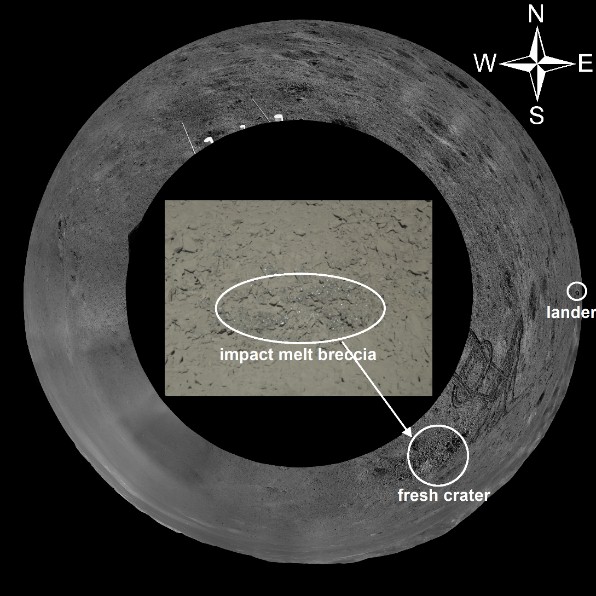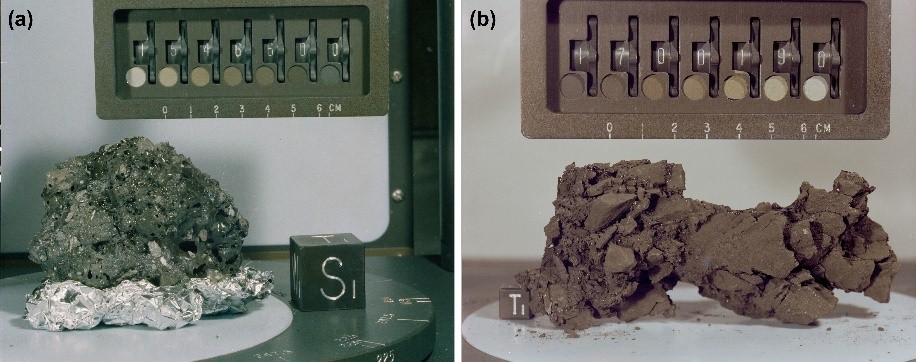Study Reveals Composition of “Gel-like” Substance Discovered by Chang’e-4 Rover on Moon’s Far Side
The unusual dark greenish and glistening "gel-like" substance in a crater on the far side of the moon has attracted widespread interest following its discovery by the Chang'e-4 rover in July 2019.
A research team led by Prof. DI Kaichang from the State Key Laboratory of Remote Sensing Science under the Aerospace Information Research Institute (AIR), partnering with scientists from other institutions, has made detailed analysis by using multiple datasets from the rover's panoramic camera (Pancam), hazard avoidance camera (Hazcam), and the visible and near-infrared spectrometer (VNIS), revealing that the unusual substance is actually an impact melt breccia, and the provenance of the rover measured surrounding regolith might originate from a differentiated melt pool or from a suite of igneous rocks. The research paper "Impact melt breccia and surrounding regolith measured by Chang'e-4 rover" was published in Earth and Planetary Science Letters, a leading journal in the Earth and planetary science community.
China's Chang'e-4 probe, including a lander and a rover, successfully touched down within the 185-km-wide Von Kármán crater inside the South Pole-Aitken (SPA) basin on January 3, 2019, making the first-ever soft landing on the lunar far side. The gel-like substance was discovered in a crater (Fig. 1) during the 8th lunar day of the rover's mission. Detailed measurements on the breccia and surrounding regolith are conducted during the 9th lunar day.

Fig. 1. Impact melt breccia and surrounding context.
The discovered breccia, measuring 52 by 16 centimeters, resembles the lunar impact melt breccia samples 15466 and 70019 (Fig. 2) that returned by the Apollo missions. It was formed by impact-generated welding, cementing and agglutinating of lunar regolith and breccia.

Fig. 2. Photos of lunar impact melt breccia samples.
Clods surrounding the breccia-hosting crater were crushed into regolith powders by the rover’s wheels (Fig. 3), indicating the regolith may be compacted slightly and becomes blocky and friable.

Fig. 3. Hazcam images show the rover’s locations.
Hapke model-based spectral unmixing results imply that plagioclase is abundant in the regolith, pyroxene and olivine have almost equal fractions, indicating the regolith is likely the weathering products of noritic rocks. The regolith measured by Chang’e-4 rover was actually a mixture of multiple sources, with ejecta from Finsen crater being primary and possible contributions from Alder crater. Finsen and Alder craters are on the margin of the proposed impact melt pool produced by the SPA basin-forming event. Therefore, the provenance of the regolith might originate from a differentiated melt pool or from a suite of igneous rocks.



News & Events